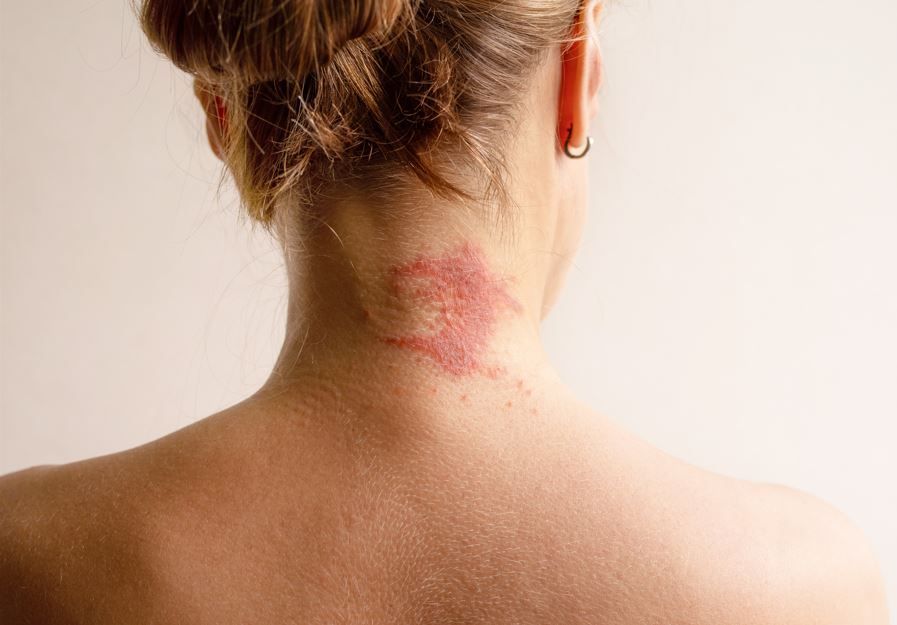- Clinical Technology
- Adult Immunization
- Hepatology
- Pediatric Immunization
- Screening
- Psychiatry
- Allergy
- Women's Health
- Cardiology
- Pediatrics
- Dermatology
- Endocrinology
- Pain Management
- Gastroenterology
- Infectious Disease
- Obesity Medicine
- Rheumatology
- Nephrology
- Neurology
- Pulmonology
Tralokinumab Dosing Every 4 Weeks is Effective Maintenance Regimen for Atopic Dermatitis, Study Suggests
The key factors predicting stable response to tralokinumab every 4 weeks (vs every 2 weeks) were IGA 0/1 and EASI-75, according to a small post hoc analysis.
Administration of tralokinumab every 4 weeks was identified as an effective maintenance dosing regimen for most people with atopic dermatitis (AD) after they had achieved stable dosing for moderate to severe disease, according to findings of a new post hoc analysis. The top factors predicting the maintained response to a 4-week interval vs the initial standard 2-week interval included an Investigator’s Global Assessment score of 0/1 and a worst daily pruritus numeric rating scale (NRS) score of less than 3 at week 16.
The findings, from an international group of researchers, were published in British Journal of Dermatology.
The approved dosing regimens for tralokinumab, a monoclonal antibody targeting interleukin- (IL) 13, include 300 mg every 2 weeks and a reduced frequency option of every 4 weeks. The every-4-week option is to be used at the clinician’s discretion for patients who achieve clear or almost clear skin after 16 weeks of treatment with the initial every 2-week regimen.
©isavira/stock.adobe.com

Unlike for biologic agents used to treat other inflammatory conditions, eg psoriasis and rheumatoid arthritis, there are no established clinical guidelines for dose tapering of biologics among individuals with AD, the authors wrote. Given the reduced cost and greater simplicity of less frequent treatment, first author Stephan Weidinger, MD, PhD, professor and chair for dermatology at the Christian-Albrechts-University zu Kiel, in Germany, and colleagues investigated patient characteristics that would help clinicians identify those eligible for and most likely to maintain stable disease on a reduced tralokinumab dosing schedule. They also evaluated data on regaining AD disease control if response was lost with less frequent dosing…
Using data from the ECZTRA 1 (NCT03131648) and ECZTRA 2 (NCT03160885) phase 3 clinical trials (each 52 weeks) the current post-hoc analysis employed machine learning to identify factors that would allow prediction of stable treatment response at week 52 among the 337 participants who qualified as Week 16 responders to tralokinumab dosed every 2 weeks in the 2 studies. Week 16 responders achieved an Investor’s Global Assessment (IGA) of clear or almost clear skin (IGA 0/1) or a 75% or more improvement in Eczema Area and Severity Index (EASI without systemic or topical rescue treatment.
Week 16 responders were subsequently randomly assigned 2:2:1 to receive tralokinumab 300 mg every 2 weeks (n = 130) every 4 weeks (n=134), or placebo (n=73) for 36 additional weeks.
At 52 weeks, researchers reported, 56.2% (P <.001), 50.0% (P =.003), and 27.4% of participants in the tralokinumab every 2 weeks, tralokinumab every 4 weeks, and placebo groups maintained stable disease (IGA 0/1 or EASI-75) without rescue treatment.
Based on the machine learning algorithm, the top-ranked predictors for maintaining stable disease by week 52 were lower IGA score (76.1%) and worst daily pruritus numeric rating scale (NRS) of less than 3 (56.5%) at week 16.
The proportion of participants who achieved IGA 0/1 (72.0% vs 50.0%) and worst pruritic NRS less than 3 (80.0% vs 72.2%) at week 16 and maintained response at week 52 was higher with tralokinumab every 2 weeks than every 4 weeks, respectively. Rates of IGA 0/1 (72.0% vs 72.2%) and worst pruritic NRS less than 3 (76.0% vs 77.8%) at week 52 among those who maintained response from weeks 12 to 16, however, were similar for tralokinumab dosed every 2 and 4 weeks, respectively. Among participants who achieved both IGA 0/1 and NRS less than 3 at week 12 alone, response rates at 52 weeks were different for the 2 dosing regimens (2-week, 71.9%; 4-week 54.8%), an outcome the authors suggest points to maintaining a stable response as a better predictor of long-term response than achieving an early response.
Among the subset of participants who lost treatment response with tralokinumab dosed every 4 weeks, 94.6% of patients recaptured stable disease by week 20 with tralokinumab every 2 weeks plus optional topical corticosteroids.
Among the study’s limitations the authors note the post hoc design and small sample size. They also note that data suggest the 16 week mark may be premature to evaluate the full effect of tralokinumab.
The researchers concluded, “[T]ralokinumab Q4W [every 4 weeks] is an effective dosing regimen for most patients who achieved stable disease control, as shown by clear/almost skin and no-to-mild itch over 4 consecutive weeks, with the standard Q2W [every 2 weeks] dosing regimen.”
References:
Weidinger S, Bewley A, Hong HC-h, et al. Predicting success with reduced dosing frequency of tralokinumab in patients with moderate-to-severe atopic dermatitis. Br J Dermatol. 2024:ljae439. doi:10.1093/bjd/ljae439
